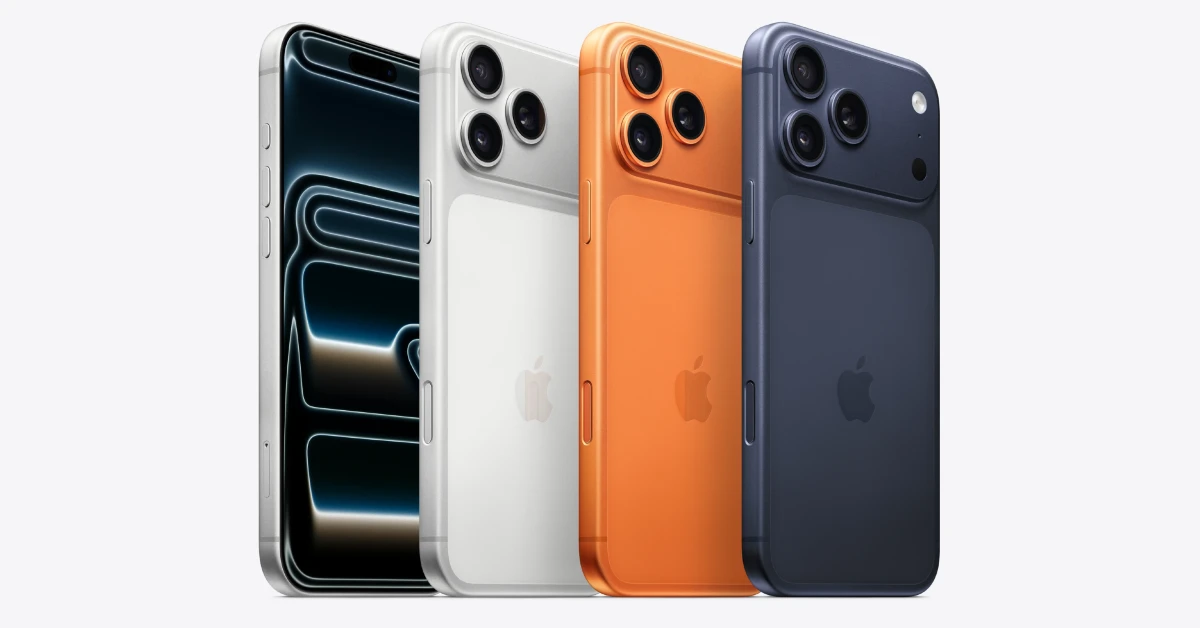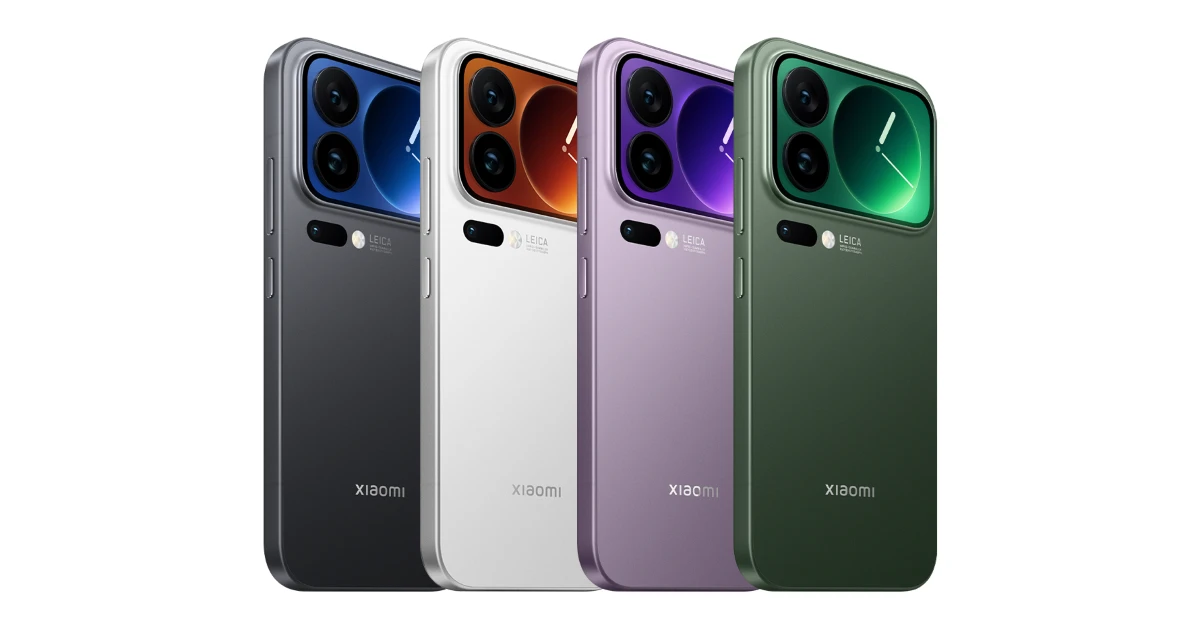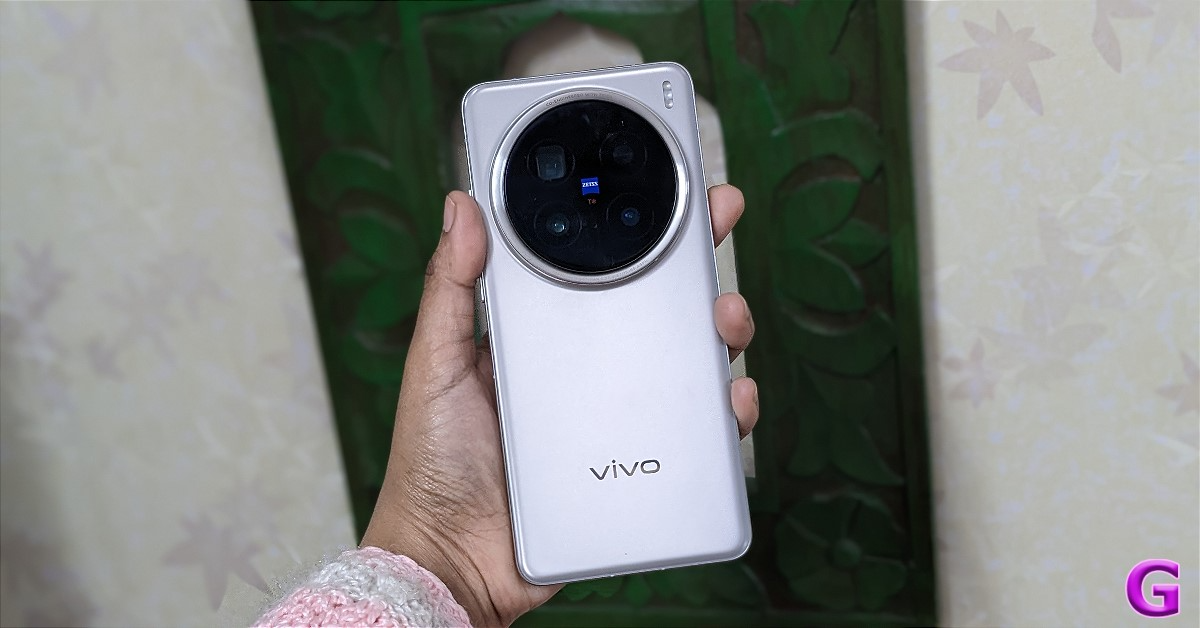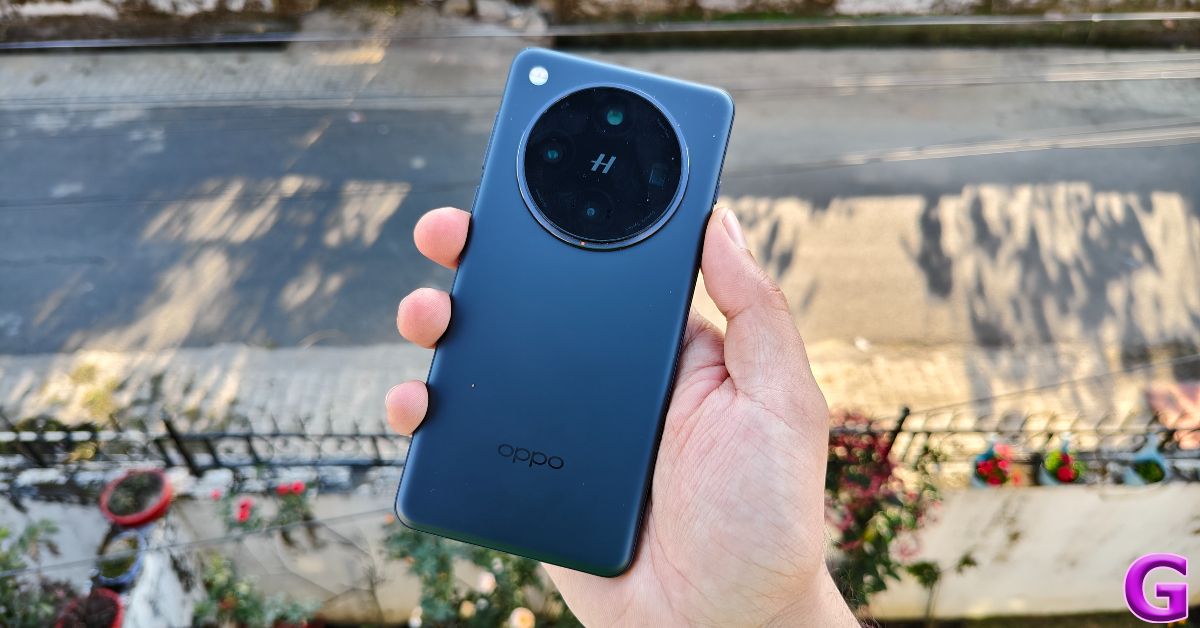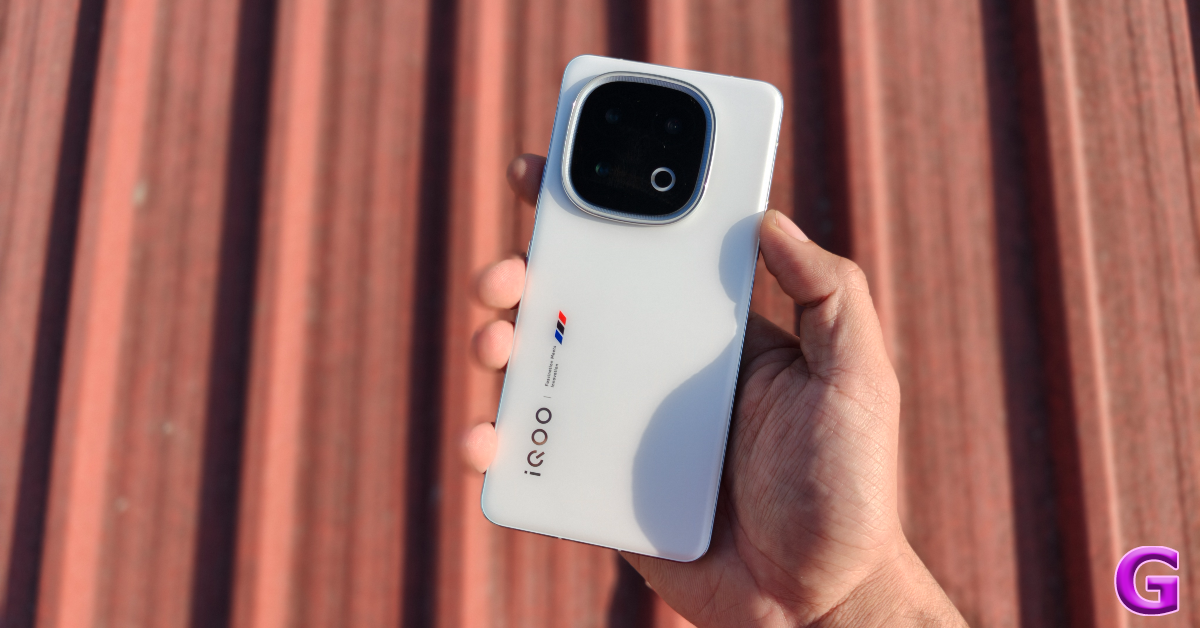It’s that time of the year when the Android smartphone market sees a lot of activity, especially in the premium segment. OEMs like Oppo, Vivo, and Realme release their flagship offerings around this time. While these releases may be a few weeks away, there are still a lot of high-end devices to choose from. Here are the top 10 premium smartphones you can buy in November 2025.
Read Also: Samsung Galaxy Unpacked 2026 timeline leaked: Report
In This Article
iPhone 17 Pro Max
The Pro Max variant in the new iPhone 17 series reclaims its spot in the upper echelon of premium smartphones. It is powered by Apple’s in-house A19 Pro chipset and runs iOS 26 out of the box. Its 6.9-inch LTPO Super Retina XDR OLED display has a 120Hz refresh rate and can reach a peak brightness of 3,000 nits. There’s IP68 protection on board against dust and water. The wide camera panel at the back comprises 3 sensors, 1 each for the primary shooter, ultrawide lens, and 4x periscope telephoto lens. The 4,823mAh battery pack supports 25W wireless Qi2/MagSafe charging.
Pros
- Cool design
- Smooth display
- Powerful processor
Cons
- Apple Intelligence fails to impress
Samsung Galaxy S25 Ultra
Launched earlier in the year, the Ultra model in the Samsung Galaxy S25 series still remains one of the best smartphones around. At the heart of the device lies the Snapdragon 8 Elite chipset. It runs the Android 15-based One UI 7 out of the box. Samsung’s flagship offering flaunts the best AI suite we’ve seen on a smartphone yet – Galaxy AI. Its range of functions includes photo editing, summarisation, translation, and a whole lot more. The 6.9-inch Dynamic LTPO AMOLED 2X display has a 120Hz refresh rate and can reach a peak brightness of 2,600 nits. The quad camera array on the back panel comprises a 200MP primary shooter, a 50MP ultrawide lens, a 10MP telephoto lens with 3x optical zoom, and a 50MP periscope telephoto lens with 5x optical zoom. The 5,000mAh battery pack supports 45W wired and 15W wireless charging. Check out our review of the Samsung Galaxy S25 Ultra to learn more about its general performance.
Pros
- Powerful chipset
- Smooth display
- Galaxy AI
Cons
- Does not have an IP69 rating
Google Pixel 10 Pro XL
The Pixel 10 Pro XL is powered by Google’s in-house Tensor G5 chipset. It runs the stock Android 16 OS out of the box. The smartphone has been promised 7 major OS upgrades. There are AI features like Magic Eraser, Circle to Search, Magic Cue, and Audio Eraser on board. The 6.8-inch LTPO OLED display has a 120Hz refresh rate and can reach a peak brightness of 3,300 nits. The rear camera panel houses a 50MP primary shooter, a 48MP periscope telephoto lens with 5x optical zoom, and another 48MP sensor for the ultrawide lens. The 5,200mAh Li-ion battery pack supports 45W wired and 25W wireless charging.
Pros
- Cool design
- Bright display
- Great software experience
Cons
- Warms up easily
Xiaomi 17 Pro Max
Xiaomi’s newest flagship draws a lot of inspiration from the iPhone 17 Pro Max. Its 6.9-inch AMOLED display has a 120Hz refresh rate and can reach a peak brightness of 3,500 nits. The back panel also looks similar to its Apple rival, except for one key difference – the 2.9-inch secondary AMOLED display. This display is as bright as the panel on the front. It can be used as a viewfinder for the rear cameras or to control widgets and carry out a bunch of other tasks. The Snapdragon 8 Elite Gen 5 SoC powering this smartphone is Qualcomm’s newest flagship processor. The camera array comprises three 50MP sensors, one each for the primary shooter, ultrawide lens, and 5x telephoto lens. The 7,500mAh Si/C battery pack supports 100W wired and 50W wireless charging.
Pros
- Secondary display
- Big battery
- Powerful processor
Cons
- Limited availability
OnePlus 13
OnePlus is set to launch its new flagship phone later this month. Until then, the OnePlus 13 holds its spot at the top of the company’s portfolio. It is powered by the Snapdragon 8 Elite chipset and runs the Android 15-based OxygenOS 15 out of the box. Its 6.82-inch LTPO 4.1 AMOLED display has a 120Hz refresh rate and can reach a peak brightness of 4,500 nits. The giant circular cutout on the back panel houses a 50MP primary shooter, a 50MP periscope telephoto lens with 3x optical zoom, and a 50MP ultrawide lens. The 6,000mAh Si/C battery pack supports 100W wired and 50W wireless charging. Read our OnePlus 13 review to find out how it performs in everyday use.
Pros
- Great chipset
- Bright display
- Affordable
Cons
- Not the most unique design
Vivo X200 Pro
The photography specialist Vivo X200 Pro has one of the most impressive camera panels we’ve seen this year. The rear array packs a 50MP primary shooter, a 200MP periscope telephoto lens with 3.7x optical zoom, and a 50MP ultrawide lens. These sensors are tuned by Zeiss. The 6.78-inch LTPO AMOLED display has a 120Hz refresh rate and can reach a peak brightness of 4,500 nits. At the heart of the phone lies the MediaTek Dimensity 9400. OS duties are handled by the Android 15-based Funtouch 15 OS. The 6,000mAh Si/C battery pack supports 90W wired and 30W wireless charging. Check out our Vivo X200 Pro review for a deep dive into its camera performance.
Pros
- Great cameras
- Smooth display
- IP68/IP69 rating
Cons
- Only 4 major OS upgrades
Oppo Find X8 Pro
The Find X8 Pro is Oppo’s crown jewel until the Find X9 Pro comes along later this month. The smartphone is powered by the MediaTek Dimensity 9400 and runs the Android 15-based ColorOS 15 out of the box. Its 6.78-inch LTPO AMOLED display has a 120Hz refresh and can reach 4,500 nits of peak brightness. There is a camera shutter button on the right side of the frame. The AI suite on this phone consists of a wide variety of features – from Best Face to Magic Eraser. The rear camera panel comprises four 50MP sensors, one each for the primary shooter, 3x telephoto lens, 6x telephoto lens, and ultrawide lens. The 5,910mAh Si/C battery supports 80W wired and 50W wireless charging. Check out our Oppo Find X8 Pro review to learn more about the smartphone.
Pros
- Great cameras
- Dedicated shutter button
- Fast charging
Cons
- Optical fingerprint sensor instead of an ultrasonic unit
iQOO 13
If you’re looking for a flagship that pays special attention to gaming, check out the iQOO 13. It uses a dual processor setup that comprises the Snapdragon 8 Elite SoC and iQOO’s in-house Supercomputing Chip Q2. The state-of-the-art 7K Ultra VC Cooling System does a great job of managing the internal temperature of the device. The 6.82-inch LTPO AMOLED display has a 144Hz refresh rate and can reach a peak brightness of 4,500 nits. The rear camera panel is surrounded by a thin LED strip, which iQOO calls the ‘Dynamic Light’. It houses a 50MP primary shooter, a 50MP telephoto lens with 2x optical zoom, and a 50MP ultrawide lens. The 6,000mAh battery pack supports 120W fast charging. For more details about its gaming performance, read our review of the iQOO 13.
Pros
- Great for gaming
- Dynamic light
- Fast charging
Cons
- Lacks wireless charging
Realme GT 7 Pro
The Realme GT 7 Pro is one of the more affordable flagships around. It is powered by the Snapdragon 8 Elite chipset and runs the Realme UI 6 out of the box. Its 6.78-inch LTPO AMOLED display has a 144Hz refresh rate and can reach a peak brightness of 6,500 nits. There’s IP68/IP69 protection on board. The rear camera panel houses a 50MP primary shooter, a 50MP telephoto lens with 3x optical zoom, and an 8MP ultrawide lens. The 5,800mAh Si/C battery pack supports 120W wired charging. Read our Realme GT 7 Pro review for more details about the smartphone.
Pros
- Powerful processor
- 144Hz display
- Fast charging
Cons
- Lacks wireless charging
Nothing Phone (3)
The Nothing Phone (3) may not rock outright flagship-grade specs, but it outshines other phones in this list when it comes to design. Its see-through back panel has a Glyph Matrix that comes alive after pressing a capacitive button. It can start a timer, act as the viewfinder, and carry out a bunch of other tasks. At the heart of the device lies the Snapdragon 8s Gen 4 SoC. OS duties are handled by the Android 15-based Nothing OS 3. The 6.67-inch OLED display has a 120Hz refresh rate and a peak brightness of 4,500 nits. The 5,500mAh battery pack supports 65W wired and 15W wireless charging. Read our Nothing Phone (3) review for a deeper analysis of its everyday performance.
Pros
- Cool design
- Glyph Matrix
- Clean OS
Cons
- Needs a better cooling system
Read Also: Attack on Titan Revolution (AOTR) Codes (November 2025)
Final Thoughts
This wraps up our list of the finest premium smartphones this month. If you’re looking for something more affordable, we recommend checking out our top 10 picks in the sub-Rs 50,000 segment. If you have any questions, let us know in the comments!



